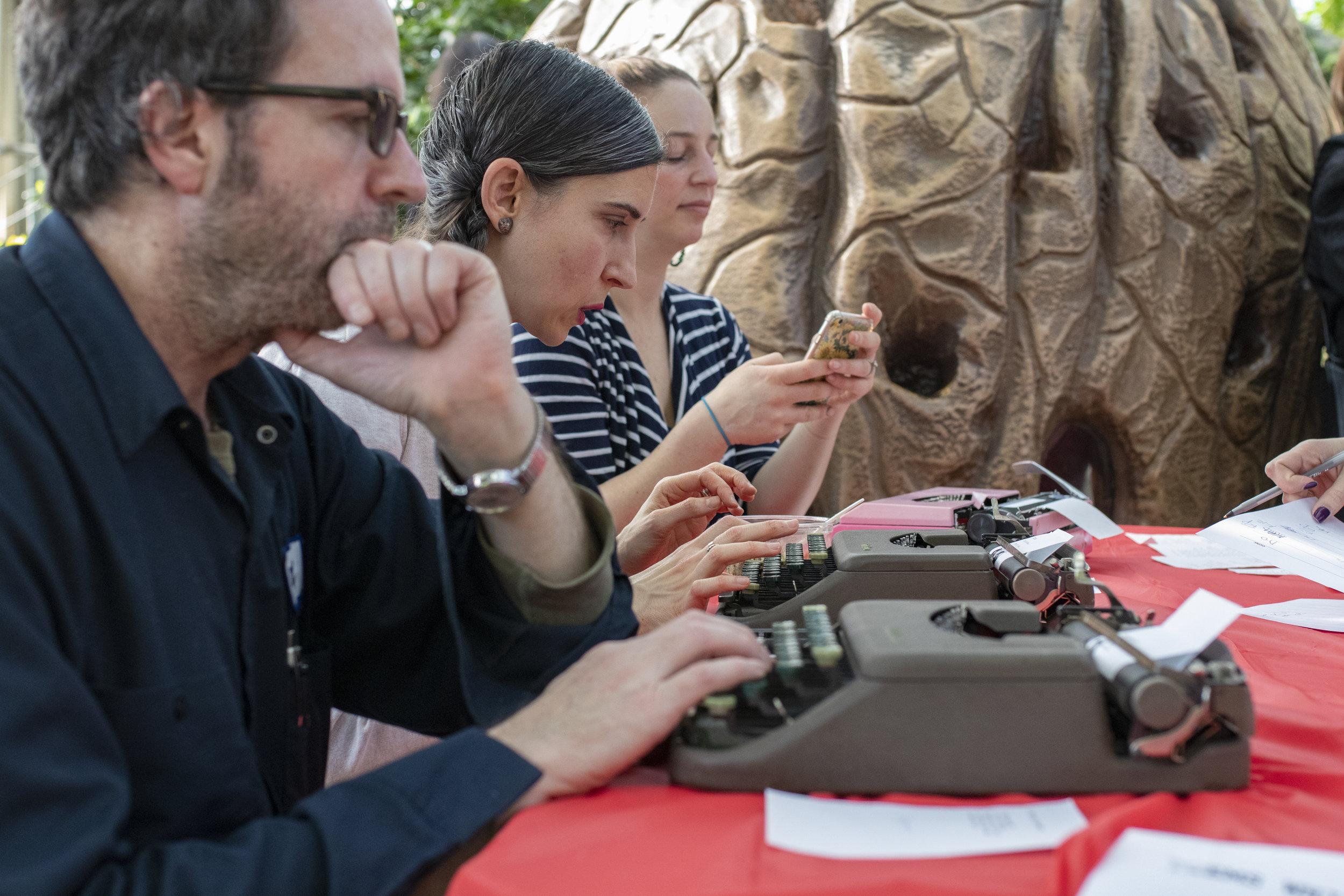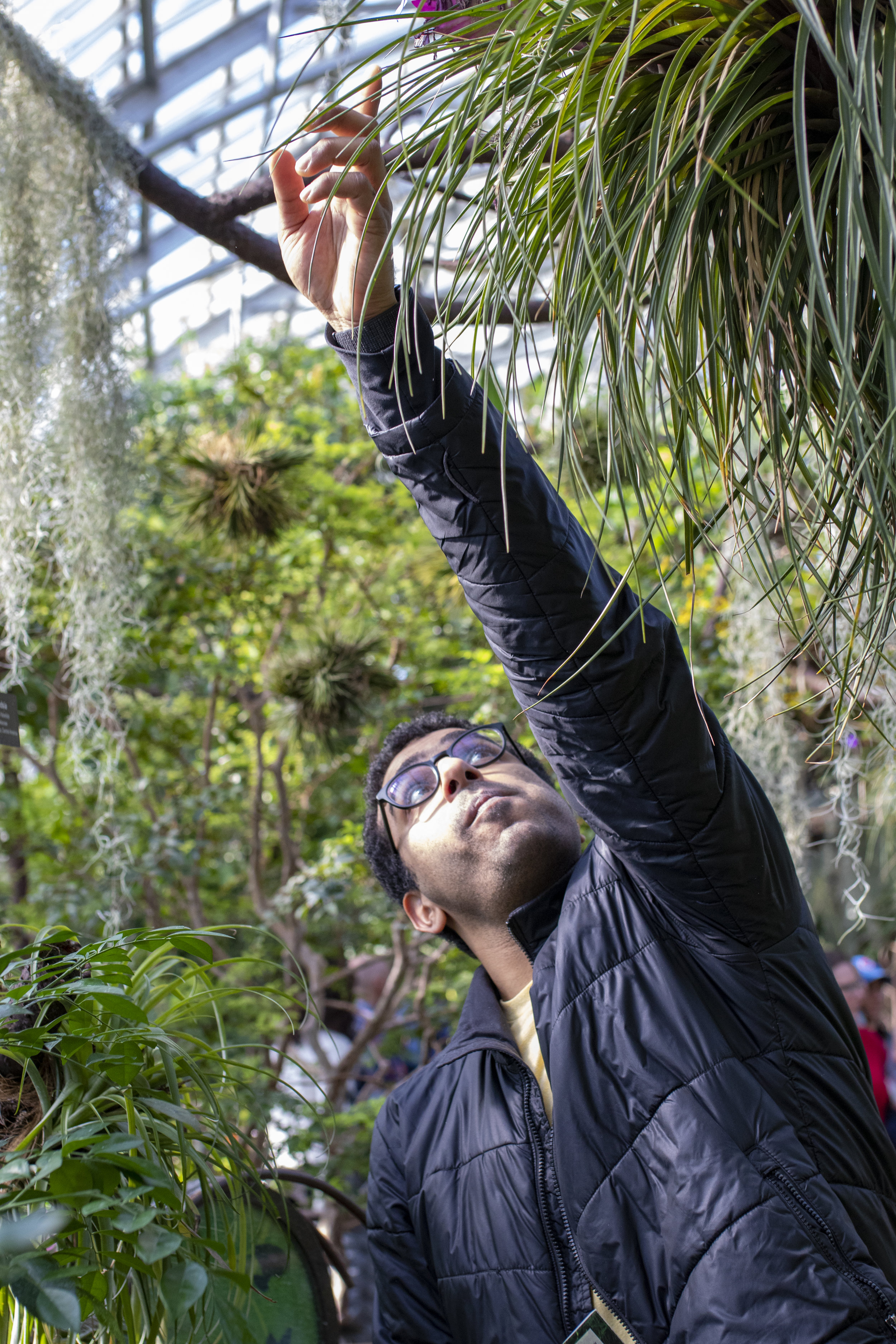ION Goes to Sweet Saturday
Photo by Leta Dickinson. A dried cacao pod.
Saturdays are sweeter with friends… and with chocolate. On February 9, visitors came to Garfield Park Conservatory for Sweet Saturday, an event showcasing some of the Conservatory’s edible plants. Members of ION joined crowds from Chicago and beyond to taste treats ranging from dried papaya to roasted crickets.
As visitors entered the Conservatory, the packed snow and bare trees were replaced with looming palms and orchids in full bloom. Visitors shed their hats and jackets as they briefly escaped the cold outside. For the event, tables were set up around the premises with a variety of different foods to try. Volunteers were stationed around the samples to show the plants that they come from and the harvesting process. Many of the samples were different forms of sweeteners: agave, honey, vanilla, molasses and even chocolate.
Here is some information about some of the sweeteners below!
Agave
It seems like lately, agave nectar is popping up more and more as an alternative to table sugar. This product of the agave plant has been marketed as a wise sugar alternative for people with diabetes, since it ranks lower on the glycemic index than table sugar does. Agave also has healthy fiber, such as fructans, which may benefit metabolism and insulin levels.
However, don’t be so quick to call it a “health food”... agave syrup is high in fructose, which has been linked to obesity.
Though it’s called a ‘nectar,’ agave doesn’t come from a flower – instead, it comes from a succulent. When you remove the leaves from the plant, what’s left is a core called a piña. Sap is extracted from this core, filtered, and heated at a low temperature. This breaks the carbohydrates into sugars, making it sweet.
Honey
At the honey table, staff were handing out toothpicks that visitors could dip into jars of honey to sample it. The honey was made by bees at Garfield Park Conservatory.
As I covered the toothpick with honey, the staff at the table explained a bit about the sugary substance.
‘The bees regurgitate the honey,’ she said, as I put the toothpick in my mouth. ‘So basically, you’re eating bee spit.’
How appetizing.
It’s actually kind of shocking how gross the process is for making such a sweet-tasting product. Bees essentially repeatedly regurgitate nectar, one bee regurgitating it into another bee’s mouth, all the way until a bee places the nectar in a honeycomb. From there, the bees will fan the nectar with their wings to make the water evaporate out of it. They seal the honey away under a layer of beeswax, secreted from the bee’s abdomen, and this honey can be stored indefinitely when away from air and water.
Even if that process makes you gag, you’ve got to admit there are some good things about honey – it’s a good source of simple carbohydrates, antioxidants, vitamins and minerals.
Honey has other benefits besides simply sweetening your tea – topically applied honey can help to heal burns or wounds that are infected after surgery. Honey can help soothe a sore throat and even calm a cough.





Vanilla
Vanilla is the second-most expensive spice, cheaper than only saffron. This high-end sweetener can only be grown within 10 to 20 degrees north and south of the equator. Vanilla comes from an orchid, and the pods of this flower are referred to as beans.
In addition to having high levels of antioxidants, the scent of vanilla can help ease anxiety, and its antibacterial properties can help reduce acne and brighten your skin. It’s also been known to help reduce a fever or decrease inflammation, such as in the liver.
Molasses
Despite its slightly bitter taste, molasses comes from sugar cane. The process of producing molasses is a long one – the sugar cane is cut, boiled, strained, skimmed and boiled again. If you boil molasses one more time, you get a special variety called blackstrap molasses, thought to be the most healthy variety. Blackstrap molasses has all kinds of benefits ranging from lowering blood pressure to easing PMS symptoms.
A sensitive plant, or mimosa, closes its leaves in response to stimuli.
Molasses is a source of magnesium, iron, and calcium, which can help protect you against osteoporosis or ward off anemia caused by lack of iron. Also, when diluted with water, it can be a hair treatment to prevent frizz.
Chocolate
If you thought the process of making molasses is long, the process of making chocolate is even longer. It begins with cleaning, roasting and removing the shells of the cocoa beans. The “meat” that’s left is known as nibs, and the nibs are blended and ground into chocolate liquor, which is a thick paste. The dry cocoa is then separated from the fatty cocoa butter.
To make chocolate liquor sweet, other ingredients are added like sugar, cocoa butter, vanilla and milk. The substance is still a little grainy, so it’s run through steel rollers to make it smooth. From here, the chocolate goes into a machine called a “conch,” which aerates the chocolate. While some varieties of chocolate don’t go through the conch machine at all, others may stay there for as many as 6 days.
Then all that’s left to do is temper the chocolate by repeatedly stirring it, letting it cool and slowly heating it up again. This makes the chocolate glossy. You can then enjoy the liquid chocolate or pour it into a mold.

